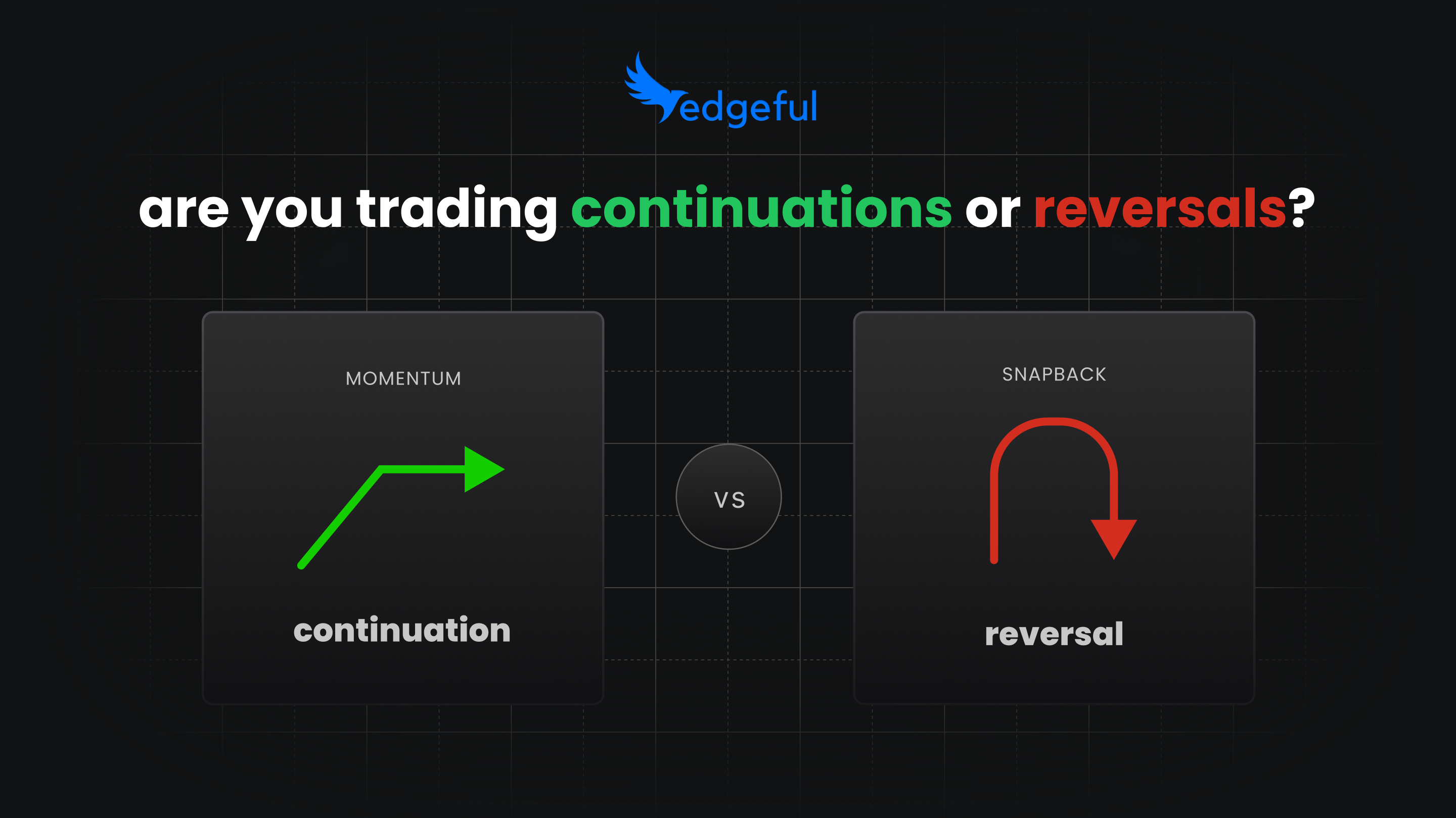cash vs margin account for day trading: complete beginner's guide

if you're new to day trading, one of the first decisions you'll face is choosing between a cash vs margin account. This cash vs margin account choice will fundamentally impact how you trade, how many trades you can make, and what risks you'll face.
most beginner traders get nervous about margin accounts because you can lose more than the money you put in — and that's a valid concern. but cash accounts come with their own limitations that can seriously restrict your trading opportunities.
here's exactly what we're going to cover:
- how cash accounts work and their daily limitations
- margin account benefits and risks you need to understand
- the PDT rule that trips up most new traders
- which account type is best for different trading styles
- practical examples with real dollar amounts
- step-by-step guidance for getting started
the cash vs margin account debate often confuses beginners, but the choice becomes clear when you understand your trading goals and risk tolerance.
you can also watch a walkthrough video by clicking here.
how cash accounts work: safer but limited
so, let's say you start an account with $1,000 or $2,000. with a cash account, you can only use the money that you have in there pretty much once a day.
here's how this plays out in practice:
cash account example:
- you start with $1,000 in your account
- you buy options worth $300 and sell them for $350
- you made $50 profit, but here's the catch...
- of your $1,000 account, you only have $700 left to trade that day because you used $300 of it
why this happens: cash accounts operate under settlement rules. when you sell a position, the proceeds aren't immediately available for new trades. you have to wait for the trade to settle — typically 1-2 business days for stocks and options.
practical limitations: if you're taking $300 trades, you only have three trades per day with a $1,000 account. then you have to wait until the next day, and your buying power will reset.
the math breakdown:
- $1,000 account ÷ $300 per trade = ~3 trades maximum
- after 3 trades, you're done for the day
- buying power resets overnight after settlement
this can be incredibly frustrating when you see a perfect setup develop later in the day, but you've already used all your buying power.
margin accounts: more freedom, more risk
with a margin account, you have the ability to take as many trades as you want — as long as you're managing your risk properly.
margin account example:
- you start with $1,000
- you take a $300 trade and close it out
- let's say you made $50 on it
- now you have $1,050 to trade again immediately
- you can theoretically take as many trades as you want if you're making or losing just small amounts
key advantages:
- maintain buying power throughout the day
- access to borrowed funds (leverage)
- required for certain asset classes like futures
- no waiting for settlement between trades
the risks you need to understand: here's where things get serious. with margin, you're technically borrowing money from your broker. this means you can lose more than the money you originally put in.
real-world risk scenario:
- you deposit $2,000
- you use 4:1 leverage to control $8,000 worth of stock
- if the trade goes against you by 25%, you've lost your entire $2,000
- if it goes against you by more than 25%, you owe your broker money
while this is an extreme scenario (you won’t be using 4:1 leverage as a beginner), this is why many beginners prefer to start with cash accounts — they're much safer and prevent you from completely blowing up your account.
the PDT rule: the biggest gotcha for new traders
here's where things get complicated, and this trips up almost every new trader...
the pattern day trader (PDT) rule is a very big problem for a lot of people. what this means is you need to have $25,000 or more in your account to avoid the PDT rule restrictions.
how the PDT rule works: if your margin account balance is less than $25,000, you can only make three day trades in a rolling 5-day period (on stocks or options — this does not apply to futures trading!).
what counts as a day trade: buying and selling the same security on the same day. so if you:
- buy 100 shares of AAPL at 10am
- sell those same 100 shares at 2pm
- that's one day trade
the PDT timeline explained: let's say you trade on Monday — you can't trade again until the following Monday when your trade count resets. if you take trades on Monday, Tuesday, and Wednesday, you'll be able to trade again the following Monday, but you need to make sure you don't exceed three trades.
what happens if you violate PDT:
- you'll get a warning from your broker
- your account may be restricted from day trading for 90 days
- you'll need to bring your account balance to $25,000 or wait out the restriction
PDT workarounds:
- use multiple brokers (each has separate trade counts)
- focus on swing trading (holding positions overnight)
- trade futures or forex (not subject to PDT rules)
- build your account to $25,000 as quickly as possible
cash vs margin account: side-by-side comparison

which cash vs margin account should beginners choose?
choose a cash account if:
- you're brand new to trading
- you want to limit your risk exposure
- you prefer swing trading over day trading
- you have less than $25,000 to start
- you want to avoid the complexity of margin requirements
choose a margin account if:
- you have $25,000+ (to avoid PDT restrictions)
- you want to day trade actively
- you understand and accept the additional risks
- you plan to trade futures contracts
- you're disciplined about risk management
my recommendation for most beginners: start with a cash account. here's why:
cash accounts force good habits. when you only have limited trades per day, you become more selective about your setups. you can't just spray and pray or revenge trade when things go wrong.
they also keep you from tilting and blowing your account completely because you only have so many trades you can work with.
getting started: practical next steps
step 1: choose your asset class
- stocks and options: can use either cash or margin
- futures: requires margin account (no choice here, but not restricted by PDT)
- forex and crypto: typically margin-based
step 2: select a broker different brokers have different margin requirements and cash account rules. research:
- minimum account balances
- commission structures
- platform features
- margin rates (if applicable)
step 3: start small regardless of account type:
- begin with money you can afford to lose
- focus on learning, not making money initially
- keep position sizes small while learning
step 4: focus on data, not emotions this is crucial. one piece of advice for any new beginner traders — make sure you focus your foundation of knowledge on the data aspect, not the psychology. you can have the best psychology in the world and still end up a losing trader because you don’t have a trading strategy with edge.
focus on the data first and build the psychology on top of the data.
frequently asked questions
Q: what's the main difference in the cash vs margin account debate? A: the primary cash vs margin account difference is risk and buying power. cash accounts limit you to your deposited funds, while margin accounts let you borrow money (with additional risk).
Q: what's a good faith violation? A: in cash accounts, buying a stock and selling it before the previous sale settles. this can restrict your account.
Q: do I need $25,000 to start day trading? A: not necessarily. you can day trade with less using cash accounts (limited trades) or by trading futures/forex which aren't subject to PDT rules.
Q: which is better for learning trading? A: cash accounts force better discipline and risk management, making them ideal for learning proper trading habits.
Q: can I lose more than I deposit with margin? A: yes, that's the main risk. however, most brokers have safeguards to prevent this in normal market conditions.
wrapping up
let's do a quick recap of what we covered today:
- cash accounts are safer but limit your daily trading opportunities
- margin accounts offer more flexibility but come with significant additional risks
- the PDT rule restricts day trading for accounts under $25,000
- most beginners should start with cash accounts to build good habits
- your choice depends on your risk tolerance, capital, and trading goals
remember, there are obviously pros and cons to both account types. the key is understanding these differences before you start trading real money.


